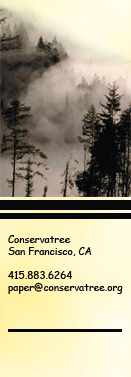


Text and Cover (Stationery, Envelopes, Heavy Text, and Cover Papers) Text and cover papers are the high quality prestige papers that are used to make an impression. Text & cover paper mills produce smaller runs of paper with a variety of finishes and colors compared to high volume commodity paper mills that produce massive tonnage of paper grades such as white office copy bond and offset papers for book printing. Text & cover is a small but high-profile segment of the paper market, notably because of the numerous choices available. Whether you are a graphic designer choosing paper for corporate annual reports and identity packages, a couple picking out wedding invitations, an artist making greeting cards, or a business choosing stationery, there is a text and cover paper that is right for the job. Paper buyers should keep in mind that one of the best choices of paper in this grade is environmentally sound paper. Typically, text & cover papers are produced at smaller mills that do not produce their own pulp. They have pulp shipped in to produce the paper, so substituting recycled pulp for virgin timber pulp is cost competitive. This is so common in fact that using text & cover paper without recycled content is almost inexcusable. Additionally, because most of the deinked recycled market pulp these mills buy is produced at mills that do not use chlorine compound bleaching, many of the 100% postconsumer recycled content brands are processed chlorine free. As these mills are smaller and produce many variations of colors, textures and brands, the amount of recycled content can be different from one brand (or even color) to the next, so be sure to note the recycled content percentage. The Conservatree Guide to text & cover papers also gives information on environmental certification programs that certain brands may have qualified for. These certifications are helpful and should be viewed as an added bonus after recycled content. Script (or Writing) grade paper is a subgroup of text & cover and used for stationery, letterhead and matching envelopes. Cover paper is the heavier paper used for business cards. Further information about what these papers are used for can be found below. About Text and Cover Paper
Writing/Script Paper
Conservatree is a project of Social and Environmental Entrepreneurs (SEE). |